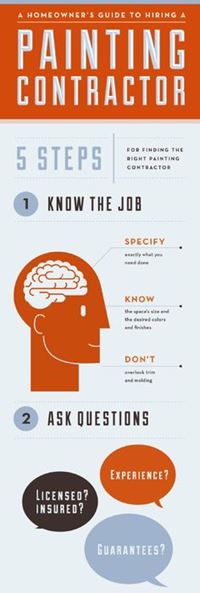Discover How Seasonal Influences Can Influence The Efficiency Of Industrial External Painting And Discover The Most Beneficial Times To Make Certain Long Lasting Results For Your Job
Discover How Seasonal Influences Can Influence The Efficiency Of Industrial External Painting And Discover The Most Beneficial Times To Make Certain Long Lasting Results For Your Job
Blog Article
Composed By-Fox Decker
When you're planning an industrial exterior paint project, seasonal factors can make or break your outcomes. You'll intend to consider exactly how temperature and humidity impact paint application and drying out times. Selecting the appropriate period can ensure your paint adheres correctly and lasts longer. Yet which seasons are really the most effective for this kind of job? Allow's discover the crucial elements that can affect your task's success.
The Impact of Temperature Level on Paint Application
When you're preparing a commercial outside paint job, the temperature can substantially influence exactly how well the paint sticks and dries out.
Preferably, you wish to paint when temperature levels range between 50 ° F and 85 ° F. If it's too cold, the paint may not treat correctly, causing issues like peeling or breaking.
On the flip side, if it's also hot, the paint can dry out too promptly, preventing proper adhesion and resulting in an unequal finish.
You must also consider the time of day; morning or late afternoon supplies cooler temperatures, which can be a lot more desirable.
Constantly check the maker's suggestions for the certain paint you're utilizing, as they often provide guidance on the excellent temperature level variety for ideal results.
Moisture and Its Effect on Drying Times
Temperature level isn't the only environmental element that affects your commercial exterior paint task; moisture plays a substantial function also. exterior painting contractor plymouth can decrease drying times drastically, affecting the general quality of your paint task.
When the air is filled with moisture, the paint takes longer to heal, which can bring about problems like inadequate adhesion and a greater threat of mildew growth. If you're repainting on a particularly humid day, be gotten ready for extensive wait times between coats.
It's crucial to keep track of local weather and strategy accordingly. Ideally, go for humidity levels in between 40% and 70% for ideal drying.
Keeping these consider mind ensures your project remains on track and delivers an enduring finish.
Best Seasons for Commercial Exterior Painting Projects
What's the most effective time of year for your business external paint projects?
Springtime and early fall are typically your best options. During these seasons, temperature levels are mild, and humidity levels are commonly reduced, producing perfect problems for paint application and drying.
Avoid summertime's intense heat, which can trigger paint to completely dry as well promptly, bring about bad attachment and finish. Likewise, wintertime's chilly temperature levels can impede appropriate drying and healing, taking the chance of the durability of your paint work.
Aim for days with temperature levels between 50 ° F and 85 ° F for optimum outcomes. Remember to inspect house painter denver for rainfall, as wet problems can wreck your project.
Planning around these aspects ensures your paint task runs smoothly and lasts longer.
Verdict
To conclude, planning your industrial exterior painting jobs around seasonal factors to consider can make a considerable distinction in the result. By organizing job throughout the ideal temperatures and moisture degrees, you'll make sure better bond and drying out times. Remember to keep an eye on local weather forecasts and select the correct time of year-- springtime and early autumn are your best bets. Taking these steps will certainly help you achieve a long lasting and expert finish that lasts.
